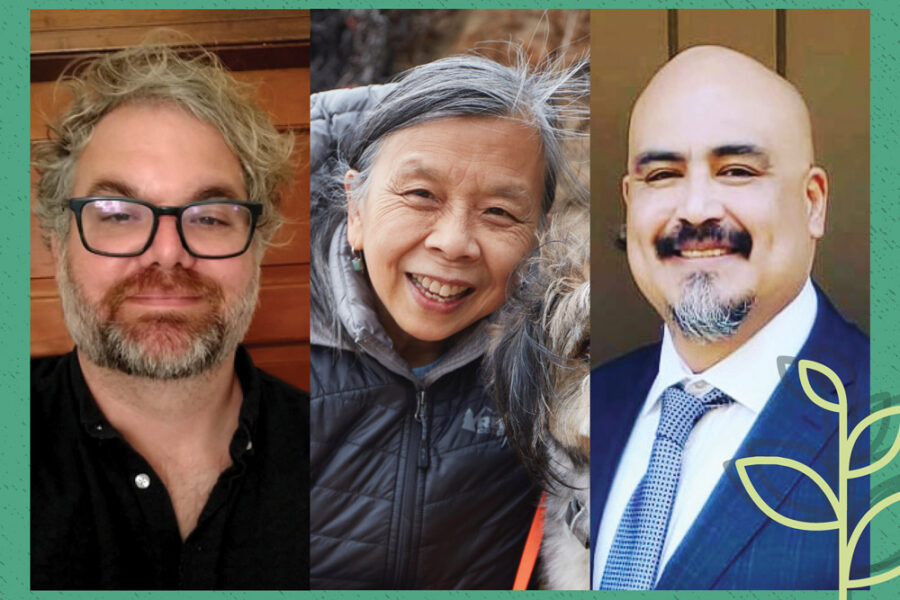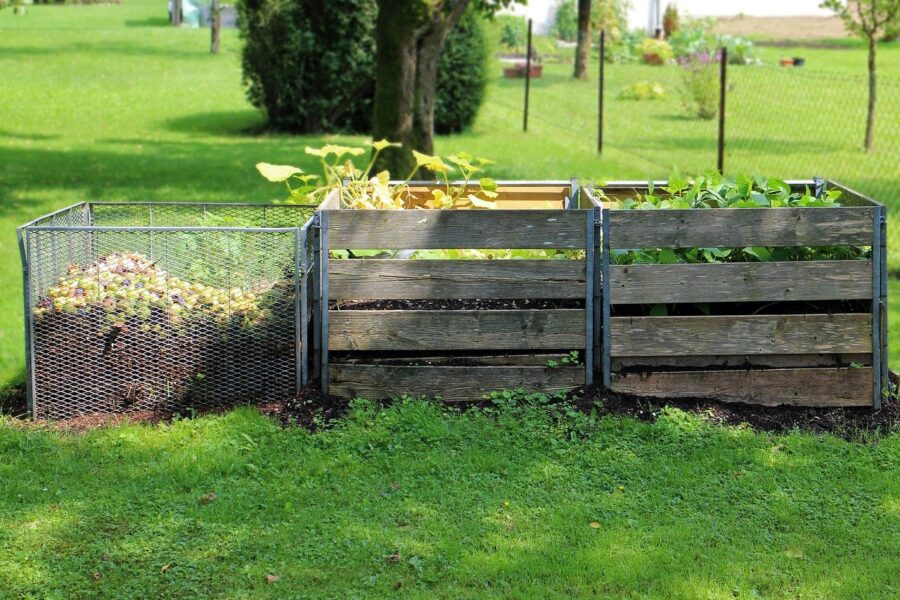Growing up in Los Angeles, Yolanda Davis-Overstreet ’18 (Antioch Los Angeles, MA in Urban Sustainability) spent the ubiquitous sunny afternoons of her childhood pedaling up and down city sidewalks. A child of the sixties, she loved her bike, with its ape hangers and golden banana seat. In high school, sometimes she would put her bike into the car and drive to Marina Del Rey for a leisurely ride down the shoreline bike path. Then sheʼd pack it back up and drive home. “Those are some of my fondest memories,” Davis-Overstreet says.
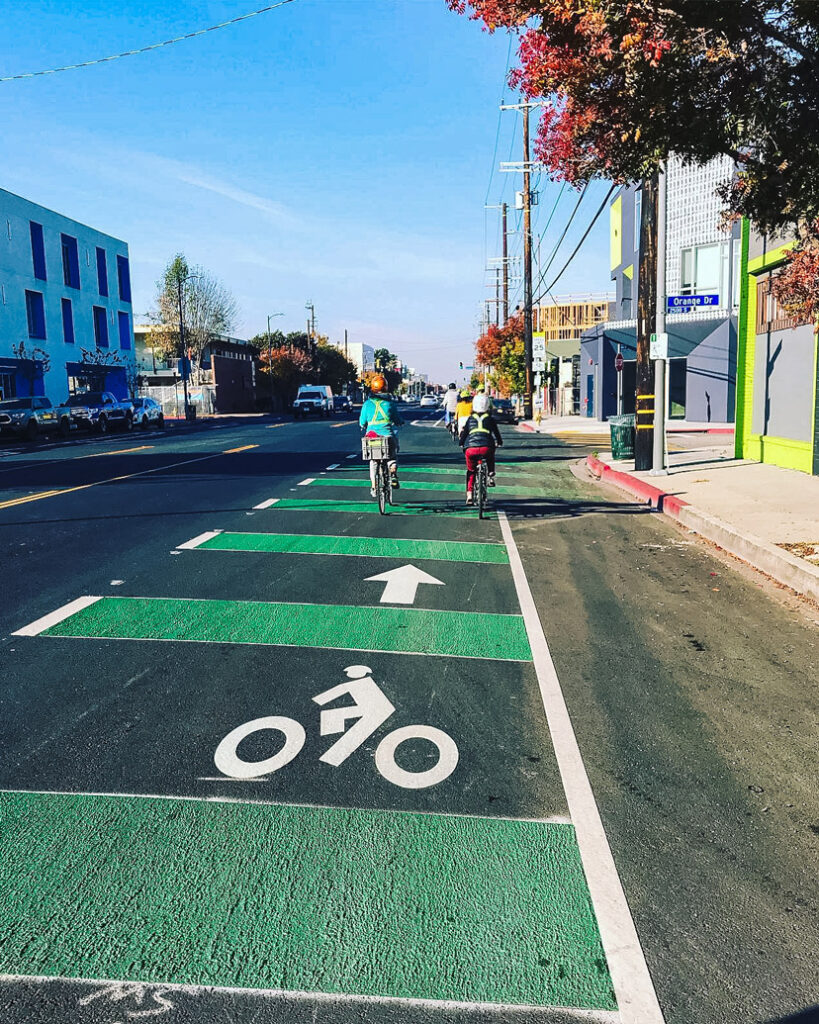
As a young person, she didn’t question why she had to leave her neighborhood to ride on paths built exclusively for bikes. It was just what you did. Decades later, though, this graduate of the MA in Urban Sustainability at Antioch Los Angeles returned to the joys of bike riding—only now she was an adult, and she knew how to think critically. She started to realize how dangerous biking was in her own backyard.
In 2018, Bicycle Magazine voted Los Angeles the worst city for biking in America. Lack of infrastructure and increasingly distracted drivers continue to lead to high numbers of fatalities for both bikers and pedestrians—and these harms are most pronounced in traditionally Black and Latinx neighborhoods, like Davis-Overstreet’s neighborhood of West Adams.
For Davis-Overstreet, this status quo is untenable. And she’s devoted herself to doing something about it. The love of riding on two wheels that started in her childhood has turned into a life of advocacy for improved pedestrian and bicycle safety in her community. She has joined and become a leader in the movement for mobility justice. Through community connections and tireless activism, Yolanda Davis-Overstreet is working to make Los Angeles a safer city—and one where future generations of kids won’t have to drive to find a safe place to bicycle.
Getting Back On A Bike—And Finding A Passion
“In college, I really didn’t bike,” says Davis-Overstreet. Despite her childhood passion for biking, she was much more likely to drive. As she says, “It wasn’t that I didn’t like it. There just came a point at that age where there were cooler things to do.”
Then, as a 36-year-old, she participated in the AIDS RIDE from San Francisco to Los Angeles. The week-long, 545-mile ride changed the trajectory of Davis-Overstreet’s life. It reminded her of the power of cycling. It reminded her how strong it made her feel as a child—and gave her once again the freedom of being on the road in the open air. It also showed her how bikes can bring people together. As she says, “It led me into doing the advocacy work that I had no idea I would be doing.”
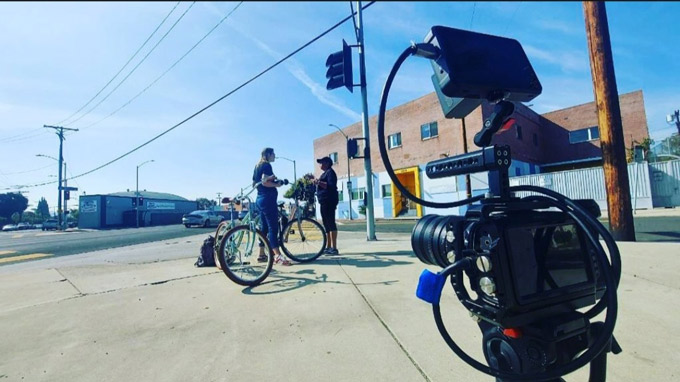
Inspired by her experience on the AIDS RIDE, Davis-Overstreet wanted to keep biking. She found a group in her neighborhood, City of Bicycles. Every Saturday, the group’s members would meet up and ride between 50 and 100 miles. During these long trips, she gradually got to know her fellow bikers. She found that they didn’t talk about their jobs or how much money they made; they talked about bikes. “It was just all about living in the moment,” Davis-Overstreet says. Those rides that started in Inglewood and went down meandering routes were filled with conversation and laughter.
At the same time, Davis started to wonder why she didn’t see more Black, Indigenous, and Latinx people riding. She wanted that to change. “I saw the power of bicycling and what it can bring to community,” she says. “That’s when I ignited an effort called Ride in Living Color.”
She launched Ride in Living Color in 2011, and the project is still going strong. Through multiple social media accounts, Ride in Living Color provides updates on community events, facilitates discussions, and strives to create more visibility for Black, Indiginous, and Latinx people who ride bikes. Ultimately it aims to promote cycling in Davis-Overstreet’s communities. “My interest was, how can bicycling improve our health?” she explains. “How can bicycling ease the load for people that have times of being depressed or the stress level is just so high?”
Pushing for Mobility Justice in West Adams
For Davis-Overstreet, raising awareness and enthusiasm is important work, and work that consumes a lot of her creativity and efforts. “But also,” she says, “we cannot, not have the conversation about mobility justice.”
This conversation is important. In 2015, Los Angeles committed to Vision Zero, a global initiative to reduce traffic-related deaths to zero. But fatalities have risen dramatically since, from 186 people killed in 2015 to at least 294 in 2021. The majority of these deaths are pedestrians and cyclists. And Black, Indigenous, and Latinx people are more likely to be seriously injured in collisions. Activists working towards mobility justice are trying to increase access to bikes and paths, and at the same time to make these activities safe for everyone.
For Davis-Overstreet, these questions touch not just on justice as an abstraction but are also profoundly personal. Years ago, when she would drop her daughter off in sixth grade at the New Los Angeles Charter Middle School, cars flew past the squat, blue building. In a city built for automobiles, no one seemed worried about whether schoolchildren could safely cross the street. The streets were built to get cars to their destinations as fast as possible.
The work to change this was often difficult. “As a Black woman that was speaking about this,” Davis-Overstreet says, “no one was hearing me. No one was seeing me.” Furthermore, most of her advocacy took the form of community service. “And community service means volunteer,” she explains. “I didn’t have someone coming to me with $100,000 and saying, ‘Okay, Yolanda, I want you to do this good work.’” Still, she continued to find ways to make it happen.
Davis-Overstreet learned that the 450 most dangerous streets for pedestrians are located in predominately Black and Latinx neighborhoods, and she decided that this needed to change. She started with the intersection that most directly affected her life. In 2013 she began a campaign to get the city to install a crosswalk in front of her daughter’s school. It took seven years for that traffic light and other safety measures to be constructed. But once it was done, Davis-Overstreet could point to the difference she made. And she knew she wanted to make more changes to promote a safe environment for her community to walk and bike.
She turned her attention to Adams Boulevard, the main thoroughfare that gives the West Adams neighborhood its name. Between 2009 and 2019, 59 severe and fatal collisions occurred on Adams Boulevard. She pushed for new traffic signal upgrades, bike lanes, lane reduction, and pedestrian islands.
This project had been on the city’s radar but needed a community member to facilitate outreach and education in the neighborhood. It took three years of advocacy and engagement but eventually building these relationships created the necessary support for the changes. People didn’t understand that the way the streets were built could be different. And that these measures meant more safety, not gentrification. Davis-Overstreet’s work centered the conversations around the needs of the people, not the speed of the cars.
It was a massive victory for her and for her community. It’s also a testament to the inspiration she draws from bicycling. “Whether I’m biking or walking along Adams, I know within me that it was because of a bike,” Davis-Overstreet says. “It was because of my great, amazing experience of being on a bike that Adams is safer.”
For Davis-Overstreet, this is a good illustration of how the mobility justice movement doesn’t just try to get people on bikes—its practitioners also look at the structures that have purposefully kept them from safely doing so. And her success here goes a long way toward proving her theory of progress, which says that community-driven changes have the best chance at working.
Sharpening Advocacy at Antioch
In 2013, Davis-Overstreet enrolled in a competent cycling course with the intention of becoming a certified instructor in safer cycling. This is where she met Donald Strauss, the founding chair of the Urban Sustainability MA program at Antioch Los Angeles. They quickly hit it off, and he encouraged her in her activism. “He felt we definitely needed more African Americans and women to be a voice and to do this work,” Davis-Overstreet says. “So what I was doing really stood out to him.”
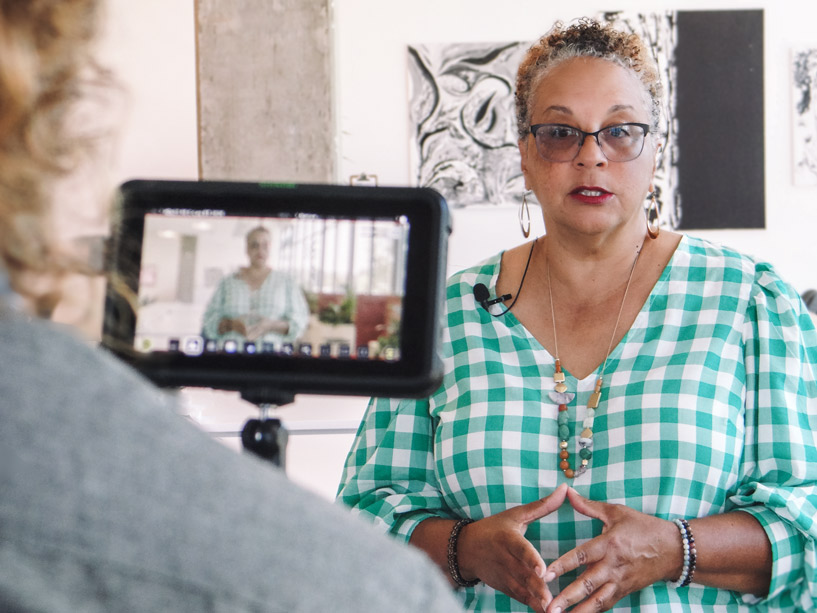
Over the years, Davis-Overstreet learned more about the program. She even invited Strauss to talk in a school-based program she developed around transportation equity and advocacy at her daughter’s middle school. Eventually, Davis-Overstreet decided to enroll in the Urban Sustainability MA.
Starting school again in her fifties was a big commitment, and Davis-Overstreet did everything she could to ensure that her studies would help her accomplish her goals. “Her passion for community work is inspiring and is a testament to people of all ages that it is never too late to pursue your dreams,” says Marlenia Myers, a colleague and friend from Antioch.
For Davis-Overstreet, the idea of urban sustainability helped illuminate questions that had arisen in her activist work promoting mobility justice. “I was so excited about this message,” Davis-Overstreet says. “But I hadn’t really tapped into, nor did I have a full scope of understanding, why we didn’t see very many African Americans out on bikes.” At Antioch, she asked this question and found that the answers were part of a larger web of systemic racism. There were many ways this manifested. The most obvious were a lack of bike lanes, missing traffic lights, and having streets in her neighborhood left off the city’s street sweeping schedule. (For decades, the City of Los Angeles refused to sweep the streets in West Adams.)
But she found deeper and more destructive policy-based foundations as well. When freeway systems were built through communities of color, they often disconnected them from other parts of the city. They made these neighborhoods a space to drive through rather than centers that people would want to spend time in. Similarly, redlining, the practice of excluding communities of color on maps that determined who could receive federal home loans, kept neighborhoods segregated—and this practice in turn made it easy for racist politicians to take money away from specific communities, all based on the race of the people who lived there.
“Everything we see, wherever we walk, wherever we bike, it does have some political connection,” explains Davis-Overstreet. “There is nothing that doesn’t, from a standpoint of infrastructure and safety. It stems from how the city decides who’s going to be safe and who isn’t going to be safe.”
Davis-Overstreet’s time at Antioch helped transform her awareness. She moved from wondering why she didn’t see more of her community on bikes to looking at the systems that needed to change to support those riders. Her fellow student Myers says, “It’s gratifying for me to witness that the ideas and early work she engaged in years ago when we were at Antioch are being realized today. She’s a walking testimony on so many fronts.”
Over the years, Davis has connected with countless people who are working towards similar goals, and she has created long-lasting relationships. Anisha Hingorani is one of these people. Hingorani works for The Advancement Project, a nonprofit that develops policies and practices with communities to create more racially equitable infrastructure in California. She and Davis met in 2016, while Davis was working on her MA at Antioch. Hingorani says, “She was already connecting the dots in her academic program, the realities of the lack of street safety in her community, and advocacy spaces, to convene around these critical life-saving policy issues.”
“The finish line that I’m trying to get to is that we’re safer, that we’re potentially healthier,” Davis-Overstreet says. “And what I have learned, especially after going back to Antioch, is that we are aware.” She’s found a new way to bring greater awareness about cycling, advocacy, and infrastructure to her community and beyond.
Biking While Black
Davis-Overstreet has received three grants from the Southern California Association of Governments to build grass-roots efforts for pedestrian safety. And one of them helped her create her 2021 documentary, Biking While Black—How Safe Are Black Lives Bicycling? This documentary uses a testimonial and interview format to talk about the lived experiences that Black people have had while biking.
To find someone to help realize the project, Davis-Overstreet reached out to her community. She ended up connecting with filmmaker Harly Crandall.
“Yolanda brings rare levels of honesty and persistence that combine and create an incredibly safe space for folks to speak,” Crandall says. He has loved the opportunity to work with such a committed activist. “I get to follow along with my camera and mic to witness the conversations that happen in this space and experience the range of emotions that come from their stories.”
For Davis-Overstreet, having the film has been a boon to her work as an activist. “It gives you something more tangible to work with when you’re out there advocating,” she says. “You actually have numbers, and then you combine that with stories of the real people that it’s affecting. Then that gives you more power.”
The stories in Biking While Black won the Best Bicycle Film prize at the UN Habitat Better Cities Film Festival in July 2022. And bringing them to a larger audience means helping more people to pay attention to how infrastructure and racist policing affect people of color who ride bikes.
“There are a lot of people that are interested in bicycling,” she says. “But in some cases, there’s that fear, the tangible fear, of, Will you be harassed?” Stories of being targeted by police are featured prominently in the film. Listening to stories of people being stopped going to and from work, being jailed over the weekend, and having their property stolen makes it clear that more than just traffic infrastructure needs to change.
One theme of Biking While Black—something that Davis-Overstreet is incorporating into all of her mobility justice work—is focusing on the next generation of Black, Indiginous, and other riders of color. After years of committed community work, she knows the changes that need to be made are not possible within the ways society is set up today. “I think moving forward, we need to have pools of support to be able to do the radical work,” she says. “Otherwise we’re so caught and entangled in this capitalistic, oppressive, racist system that people don’t even know where to start.”
Ultimately, Davis-Overstreet is focused on opportunities for action and collaboration. After building her own platform to speak for years, the activist, advocate, and cyclist is now making sure she’s raising the voice of the rest of her community, too. She has firsthand experience of how actually being involved in making a positive change—whether that’s getting a crosswalk installed in front of a school or making an award-winning documentary—can awaken something in a person. And she’s looking to her community for the path forward. “These very community members have the solutions,” she says. “And we’re just not providing the platforms and spaces for them to speak on it.” Slowly, steadily, she is working to change that.
Yolanda Davis-Overstreet’s short film Biking While Black is available for streaming on YouTube. To learn more about Davis-Overstreet, you may visit her website BIKING WHILE BLACK and you can find her organization, Ride in Living Color on Facebook.


